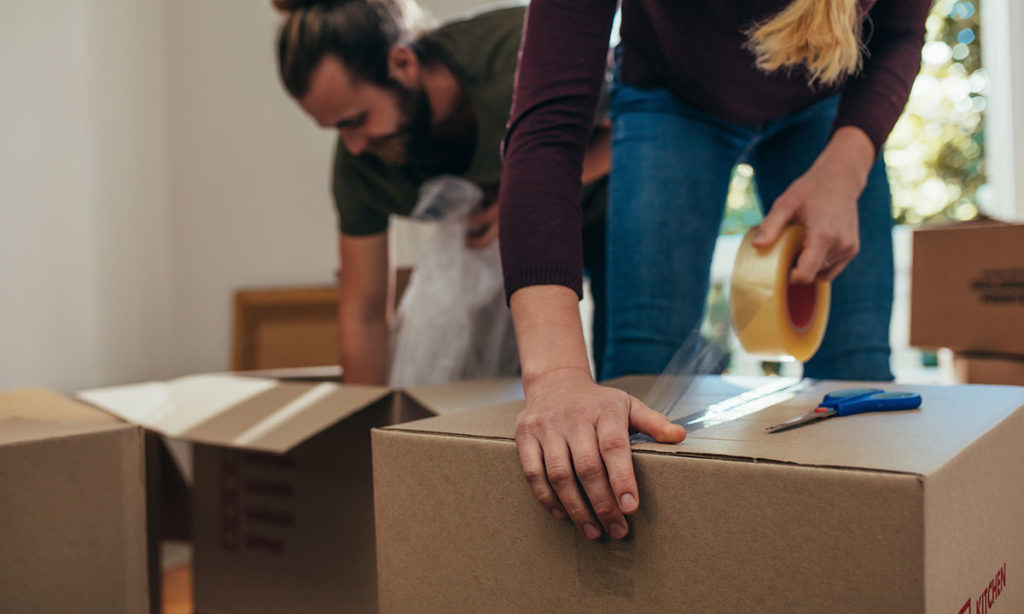A question we get asked often is how to pack for moving most efficiently.
The truth is, packing up your home is quite literally a mixed bag. The best packing strategies vary depending on the type of item. So, we recommend dividing your belongings into categories and then packing them in separate, marked moving boxes. This also makes unpacking and settling into your new home easier!
The following are the most important categories of items to pay attention to when packing.
How to pack clothes for moving
Naturally, clothes are some of the first items you’ll need after the move. From our experience, we recommend the following steps to make moving your wardrobe as easy as possible.
Checklist: how to pack clothes for moving
1. Only pack clothes you still need
Moving houses is a good time to re-evaluate your wardrobe. Donate, sell or recycle any clothes that no longer fit, clothes that are worn out or ones that you simply don’t love to wear anymore.
2. Set aside and outfit for moving day
Set aside a comfy and practical outfit to wear on the big day. Don’t make the rookie error of packing up all your clothes altogether!
3. Categorise your clothes and pack in separate, marked boxes
Most likely, you’ll need multiple boxes for your clothes, so make sure to divide them into categories. For example, separate summer clothes from winter clothes, and everyday clothes from formal clothes. This way, you can unpack the clothes you need the most first.
4. Pack shoes separately
Always pack shoes separate to avoid your clothes getting dirty. Fill up each shoe with wadded up paper, so they don’t lose their shape during the process. It is also good to wrap packing paper around each shoe to protect them from scuffing.
5. Roll up or vacuum seal your clothes to save space
Marie Kondo knew what she was talking about when she got us all rolling up our clothes! If you’re quite the fashionista, another option is to vacuum-pack your clothes in travel space saver bags.
How to pack books for moving
As with clothes, we recommend donating or selling what you no longer need when packing books for moving. Books are quite heavy, so it’s essential you get proper, sturdy, cardboard moving boxes to handle the weight.
Hardcover books are easy to pack standing upright, just like on a bookshelf, whereas paperbacks are better packed flat. Avoid over-stuffing the box, as the books could get damaged in the process. It’s better to fill any remaining space with wadded-up paper. Finally, secure the box with strong scotch or duct tape.
Keep in mind, when it comes to packing books, the most important thing is to keep them dry throughout the process.
How to pack plates and glasses for moving
When packing fragile items, such as plates and glasses, make sure to have plenty of bubble wrap and sturdy moving boxes handy.
Start by closing the bottom of the box so it can stand up. Before you put anything in the box, secure the bottom with tape going in both directions, at least halfway up the side of the box. Pad the bottom of the box with something soft, such as bubble wrap or wadded paper.
To ensure the plates and glasses don’t shatter, they must all be wrapped individually. Stack similar size items standing up inside the box. Then, fill any remaining space with tea towels or other soft household items.
Finally, make sure to mark any boxes containing plates or glasses as fragile, also noting which side of the box should remain up.
Load the truck the smart way
Once all your belongings are neatly packed in boxes, it’s time to load the moving truck. Fragile and heavy items, such as plates and glasses, should go to the floor of the truck to avoid them moving around. Lighter items, such as clothes, can go over them. If you’re moving furniture, such as tables, place boxes filled with fragile items underneath them for protection.
If you need expert help in packing for a move, have a look at our packing materials service delivered to your door. If you need advice on your local or interstate move, contact our team of expert removalists today.

